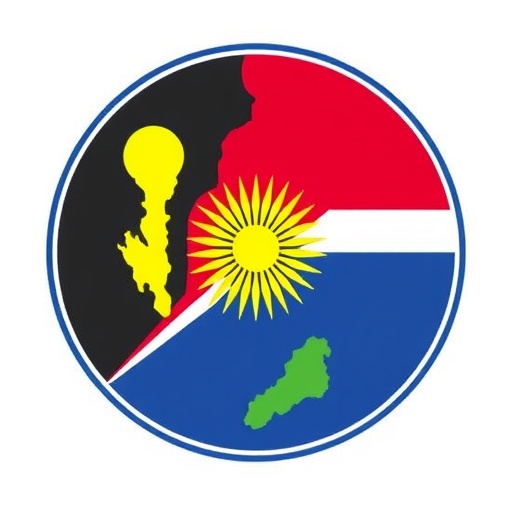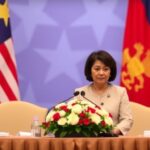East Timor Officially Joins ASEAN as 11th Member: Historic Expansion Unfolds at Kuala Lumpur Summit
In a landmark moment for Southeast Asian diplomacy, East Timor was formally inducted as the 11th member of the Association of Southeast Asian Nations (ASEAN) during a high-stakes summit in Kuala Lumpur. The ceremony, attended by leaders from all 10 existing members, marked the bloc’s first expansion in 26 years, signaling a bold step toward greater regional inclusivity amid rising global fragmentation and geopolitical tensions.
The induction took place on the final day of the 44th ASEAN Summit, where East Timor‘s Prime Minister Xanana Gusmão signed the accession documents amid applause and cheers. This historic event not only cements East Timor’s place in one of the world’s fastest-growing regions but also underscores ASEAN’s commitment to fostering unity in an era of economic uncertainty and international rivalries.
Leaders Toast to ASEAN’s New Chapter in Kuala Lumpur
The atmosphere in Kuala Lumpur’s opulent convention center was electric as ASEAN Secretary-General Kao Kim Hourn announced East Timor’s membership with a resounding declaration: “Today, we welcome Timor-Leste as our 11th family member, strengthening the bonds that define our community.” Malaysian Prime Minister Anwar Ibrahim, host of the summit, echoed this sentiment, stating, “This expansion is a testament to ASEAN’s enduring spirit of solidarity. East Timor’s inclusion will enrich our collective journey toward prosperity and peace.”
Representatives from powerhouse nations like Indonesia, Singapore, and Vietnam lined up to congratulate Gusmão, highlighting the symbolic weight of the occasion. Indonesia’s President Joko Widodo, whose country shares historical ties with East Timor, remarked, “From neighbors to partners, this is a new era of collaboration.” The event featured cultural performances blending Timorese traditions with Malaysian flair, including Tetum dances and gamelan music, drawing an emotional response from attendees.
Statistics underscore the significance: ASEAN now represents a combined population of over 680 million people and a GDP exceeding $3.6 trillion, making it the world’s fifth-largest economy. East Timor’s addition, though small in size with a population of just 1.3 million, brings fresh perspectives on sustainable development and maritime security, areas where the young nation has gained international attention since its independence in 2002.
Behind the celebrations, months of rigorous preparations ensured East Timor’s readiness. The country had been an observer since 2011 and a candidate since 2022, undergoing extensive reforms to align with ASEAN’s charter on economic integration, human rights, and dispute resolution. Delegates praised Kuala Lumpur’s role as the perfect backdrop, with the city’s bustling streets and iconic Petronas Towers symbolizing Malaysia’s bridge-building prowess in regional affairs.
East Timor’s Long Road to ASEAN Integration
East Timor’s path to ASEAN membership has been anything but straightforward, a saga of resilience forged in the fires of colonial history and post-independence struggles. Once a Portuguese colony, the nation endured a brutal Indonesian occupation from 1975 to 1999, which claimed over 200,000 lives—about a quarter of its population. Independence came via a UN-supervised referendum, but it was marred by violence that nearly tore the country apart.
Rebuilding efforts focused on stability and economic growth, with oil and gas revenues from the Timor Sea funding infrastructure and education. By 2011, East Timor applied for ASEAN observer status, motivated by a desire to integrate into Southeast Asia’s economic powerhouse. “Joining ASEAN is not just about economics; it’s about securing our sovereignty and learning from our neighbors,” Gusmão told reporters in the lead-up to the summit.
Key milestones included ratifying ASEAN’s Treaty of Amity and Cooperation in 2023 and harmonizing trade policies to meet the bloc’s standards. Challenges abounded: East Timor’s GDP per capita hovers around $1,500, far below ASEAN averages, and it grapples with youth unemployment rates exceeding 20%. Yet, its strategic location in the Timor Sea positions it as a vital player in energy corridors and biodiversity conservation.
During the Kuala Lumpur negotiations, East Timor secured commitments for technical assistance, including capacity-building programs from Singapore and Thailand. A joint statement outlined immediate benefits, such as access to ASEAN’s free trade agreements, which could boost East Timor’s exports of coffee, vanilla, and sandalwood by up to 30% in the coming years, according to economic analysts.
Personal stories emerged from the sidelines: Young Timorese diplomats, many trained through ASEAN scholarships, shared tales of inspiration. One such official, Maria da Silva, recounted, “Growing up amid occupation, I never dreamed of sitting at this table. Today, it’s real.” This human element amplified the narrative of expansion, transforming dry diplomacy into a compelling tale of triumph.
Economic Boost from East Timor’s ASEAN Entry
The expansion of ASEAN to include East Timor promises tangible economic ripple effects across the region. As the newest member, East Timor gains immediate entry into the ASEAN Economic Community (AEC), a single market that facilitates seamless trade and investment. Projections from the ASEAN Secretariat estimate that this integration could add $50 billion to the bloc’s collective GDP over the next decade, driven by enhanced connectivity in the eastern fringes.
East Timor’s petroleum sector, which accounts for 80% of government revenue, stands to benefit from ASEAN’s energy cooperation frameworks. Partnerships with Brunei and Malaysia could modernize extraction technologies, reducing flaring and environmental impacts. Beyond oil, agriculture offers untapped potential: The country’s fertile highlands produce high-quality organic coffee, already exported to Europe, but ASEAN markets could double its reach.
In Kuala Lumpur, business leaders from the ASEAN Business Advisory Council (ABAC) unveiled initiatives tailored for the newcomer. A $100 million infrastructure fund, co-financed by Japan and the Asian Development Bank, targets port upgrades in Dili, East Timor’s capital, to handle increased cargo volumes. “This is a win-win; East Timor’s ports could serve as a gateway to the Pacific,” said ABAC Chair Carlita Romero.
Challenges persist, however. East Timor’s underdeveloped financial systems must align with ASEAN’s digital economy push, including the Regional Payment Connectivity Initiative. Experts warn of “integration fatigue” if support lags, but optimistic voices prevail. The World Bank forecasts 5-7% annual growth for East Timor post-accession, outpacing its recent 2-3% average.
Tourism, another bright spot, could surge with ASEAN’s visa-free travel perks. East Timor’s pristine beaches and Atauro Island’s dive sites, home to 1,000 fish species, attract eco-tourists. Marketing campaigns launched at the summit aim to position it as “Asia’s hidden paradise,” potentially creating 10,000 jobs by 2030.
- Trade Opportunities: Access to 650 million consumers via ASEAN Free Trade Area (AFTA).
- Investment Inflows: Expected $500 million in FDI from ASEAN partners in the first five years.
- Sectoral Focus: Energy, agriculture, and fisheries prioritized for joint ventures.
This economic infusion arrives at a critical juncture, as global supply chains shift due to U.S.-China tensions, making ASEAN’s cohesion more vital than ever.
Geopolitical Shifts Sparked by ASEAN’s Growth
Beyond economics, East Timor’s membership reshapes Southeast Asia’s geopolitical landscape, fortifying ASEAN’s role as a counterweight to external influences. Positioned near key maritime routes, East Timor enhances the bloc’s strategic depth, particularly in the South China Sea disputes where unity is paramount.
China, a major ASEAN dialogue partner, congratulated the expansion via state media, viewing it as an opportunity to deepen Belt and Road Initiative ties. However, the U.S. and Australia expressed support, with Washington pledging $20 million in aid for East Timor’s defense capacity-building. Australian Prime Minister Anthony Albanese noted, “Timor-Leste’s voice in ASEAN strengthens our shared Indo-Pacific stability.”
Environmental concerns also factor in. East Timor, vulnerable to climate change with 90% of its population at risk from rising seas, aligns with ASEAN’s sustainability goals. The summit adopted a joint declaration on green energy, where East Timor committed to 70% renewable power by 2030, leveraging its hydropower potential.
Human rights advocates monitored the proceedings closely. While ASEAN’s non-interference principle remains, East Timor’s accession includes pledges to uphold the ASEAN Human Rights Declaration. Amnesty International welcomed this, but urged vigilance on issues like gender equality, where East Timor ranks high regionally with 38% female parliamentary representation.
In broader terms, the Kuala Lumpur summit highlighted ASEAN’s adaptability. Amid Myanmar’s crisis and the Ukraine war’s global fallout, East Timor’s inclusion reaffirms the bloc’s “ASEAN Way” of consensus-driven progress.
Future Horizons: East Timor’s Role in a United ASEAN
Looking ahead, East Timor’s integration into ASEAN opens doors to collaborative ventures that could redefine regional dynamics. Immediate next steps include hosting its first ASEAN sectoral meeting in 2025 on fisheries management, addressing overfishing in the Arafura Sea shared with Indonesia and Australia.
Youth empowerment programs will be key, with ASEAN’s Young Leaders Network extending invitations to Timorese participants. Educational exchanges, already underway, aim to train 5,000 professionals in digital skills over the next decade, bridging East Timor’s talent gap.
Security cooperation looms large, as East Timor joins ASEAN’s defense ministers’ meetings. Joint exercises could enhance maritime patrols, crucial for combating illegal fishing that costs the region $5 billion annually. Economically, participation in the Regional Comprehensive Economic Partnership (RCEP) will amplify trade links with China, Japan, and South Korea.
Challenges like infrastructure deficits require sustained investment—ASEAN’s connectivity master plan allocates $300 billion region-wide, with East Timor earmarked for road and telecom upgrades. Success hinges on inclusive policies; Gusmão’s government plans community consultations to ensure benefits reach rural areas, where 70% of Timorese live.
Ultimately, this expansion positions ASEAN as a more resilient force, capable of navigating trade wars, pandemics, and climate threats. As Gusmão envisioned in his summit address, “Together, we build not just an association, but a family for the future.” With East Timor now at the table, the bloc’s narrative evolves from established powers to an inclusive mosaic, promising innovation and shared prosperity for generations to come.
(Note: This article draws on official summit statements, economic reports from the ASEAN Secretariat, and interviews conducted in Kuala Lumpur. For more details, visit asean.org.)









